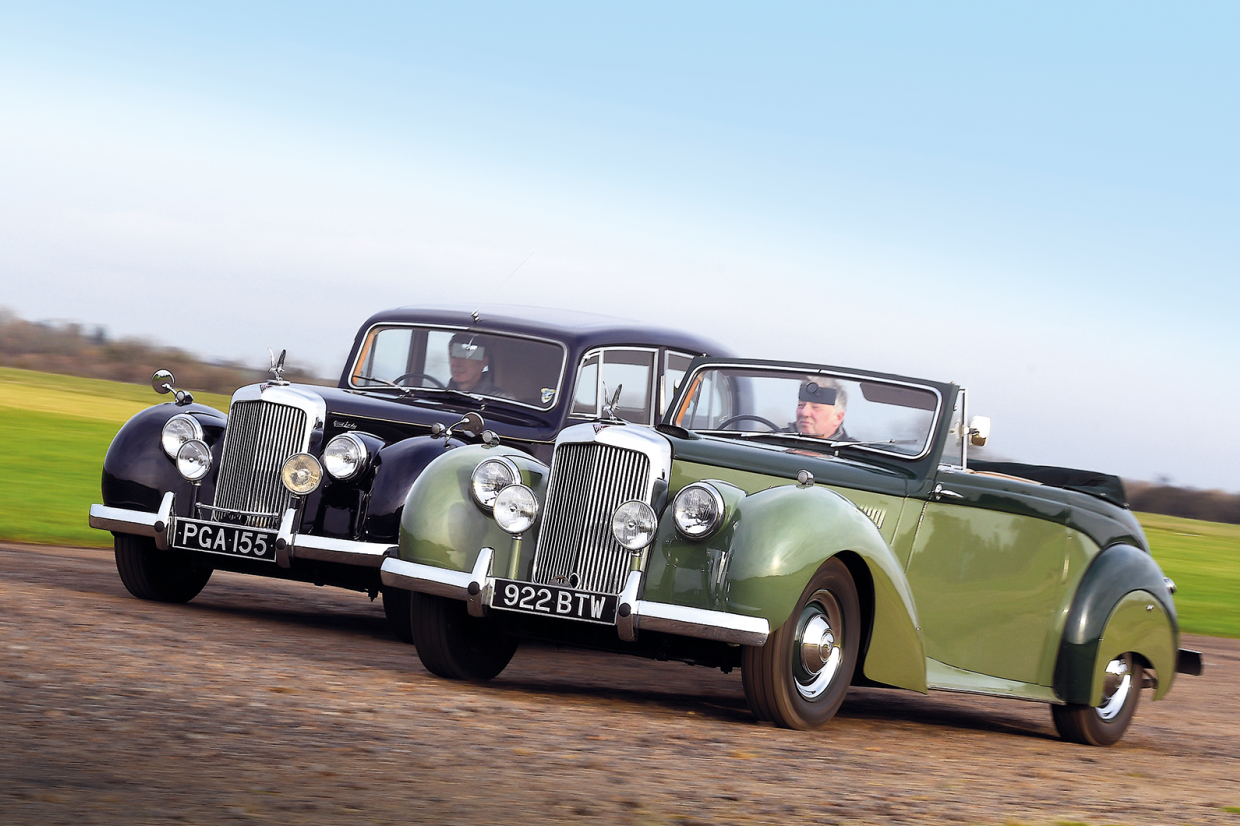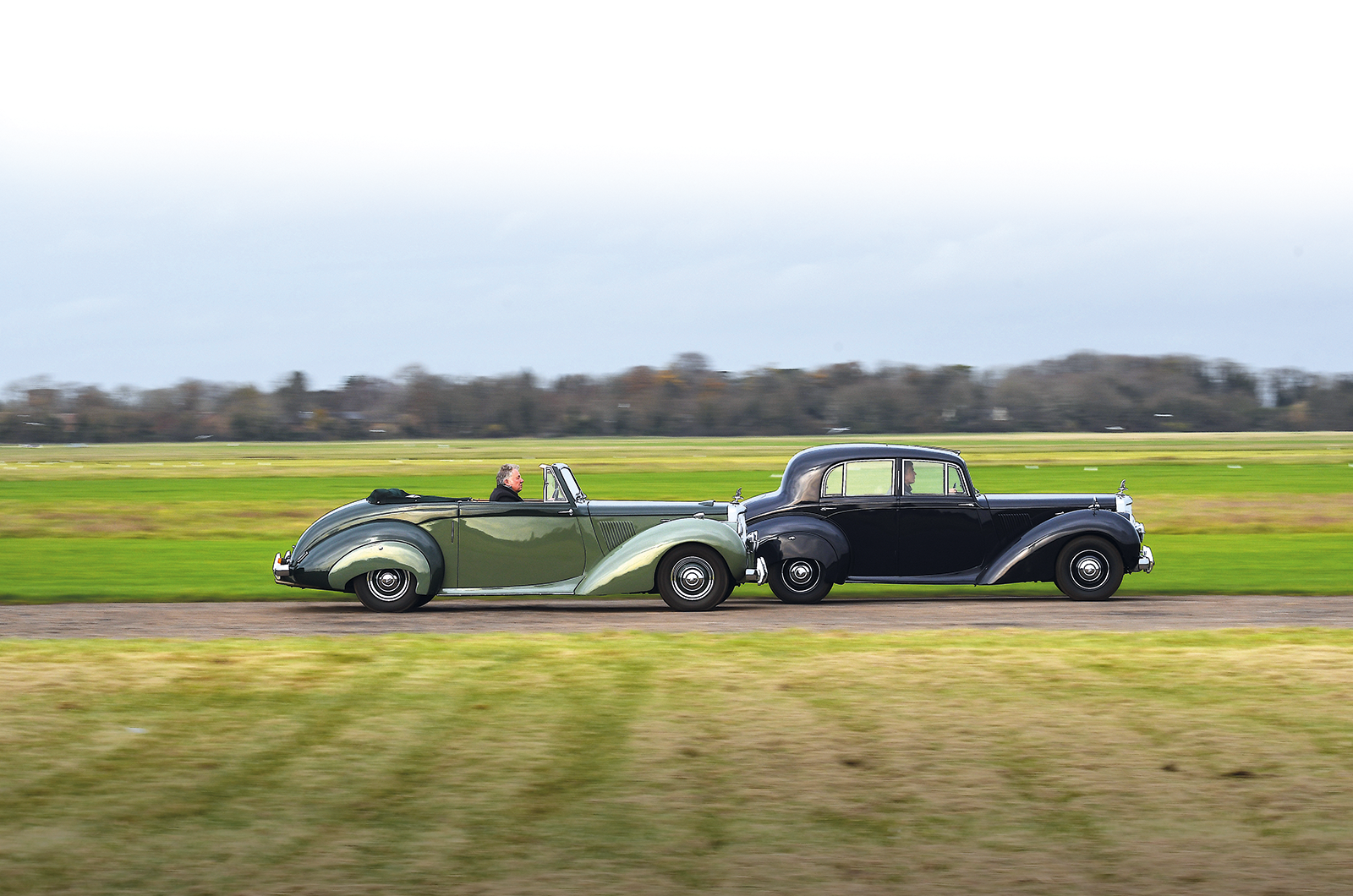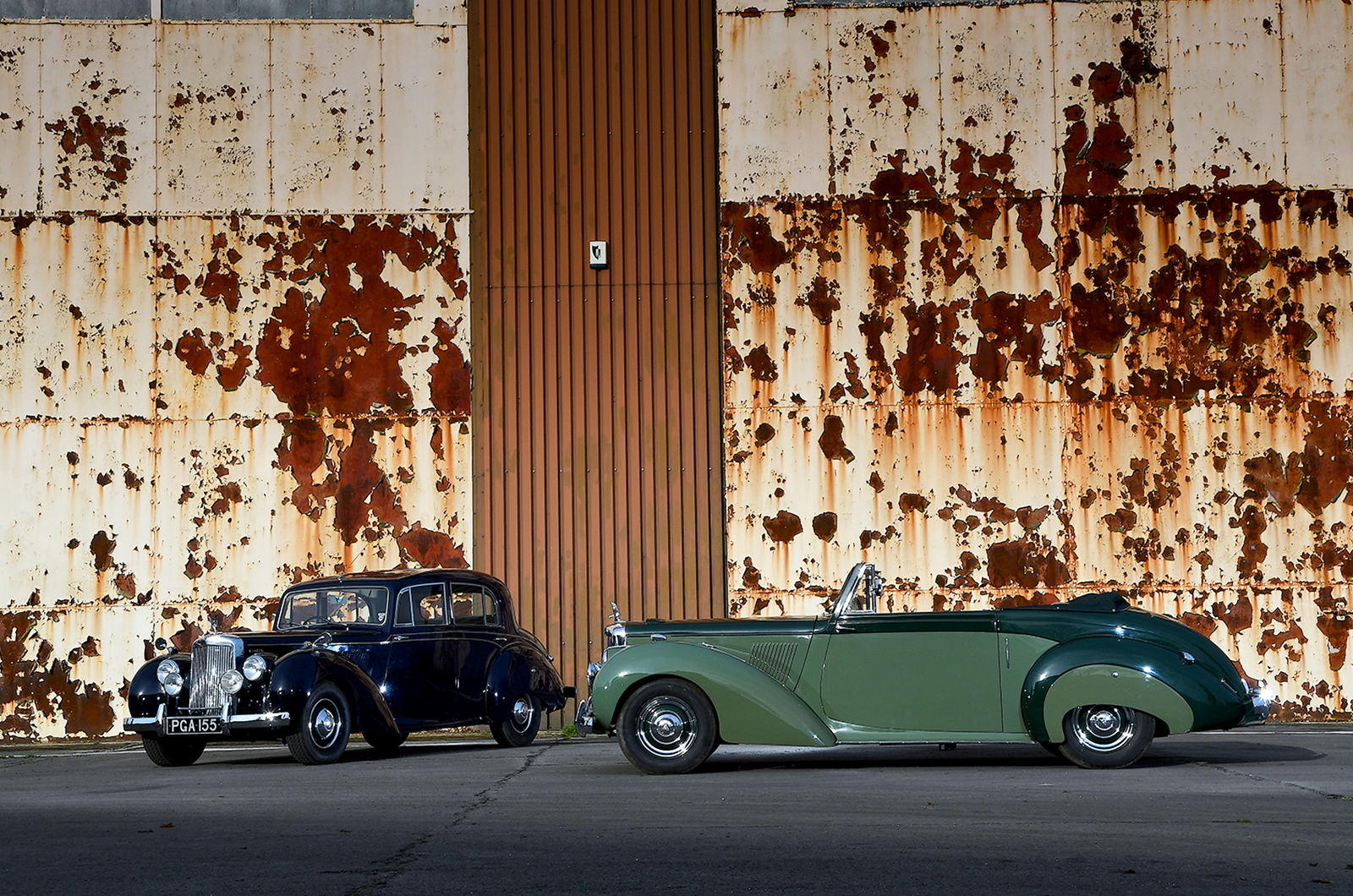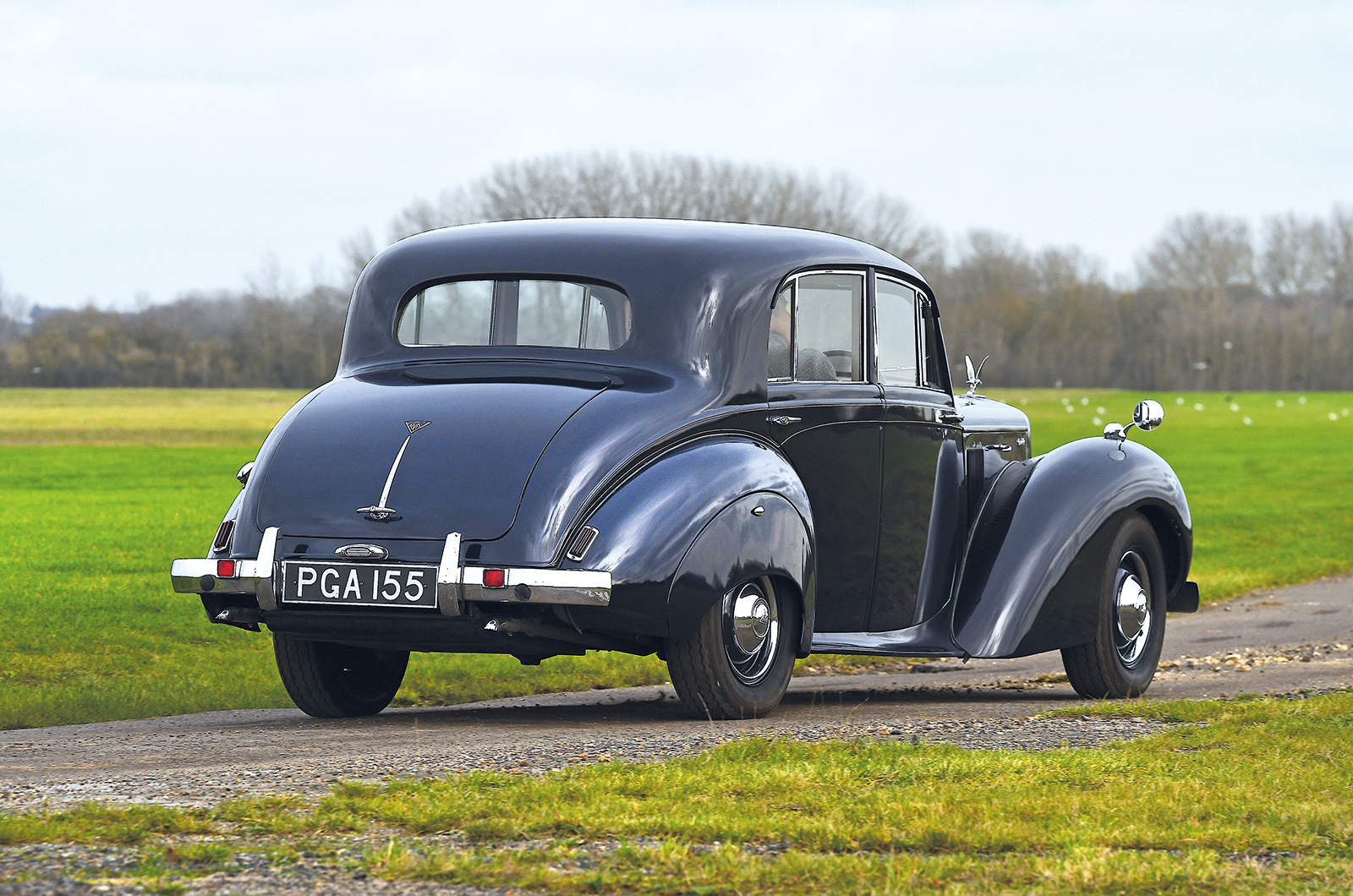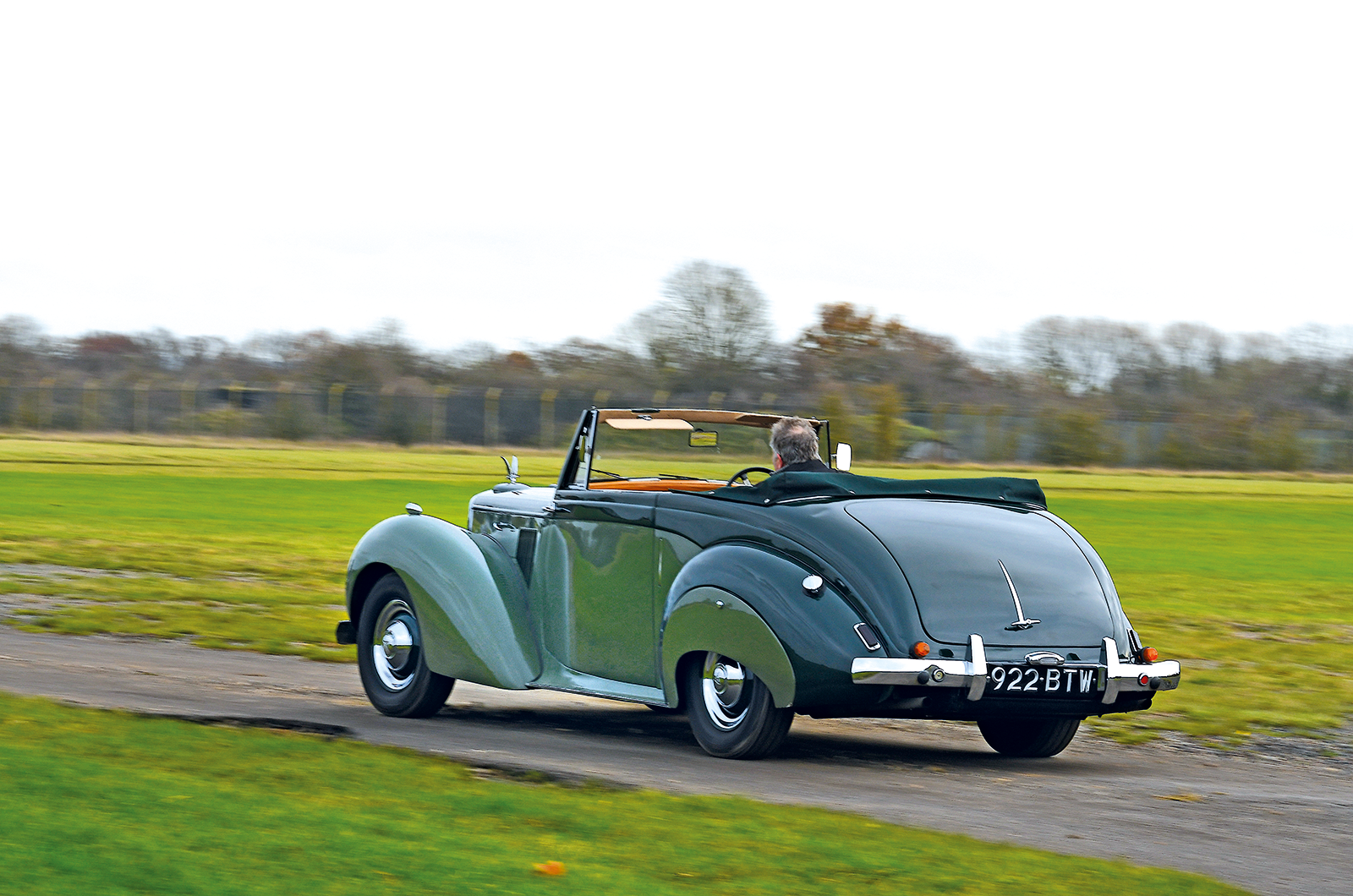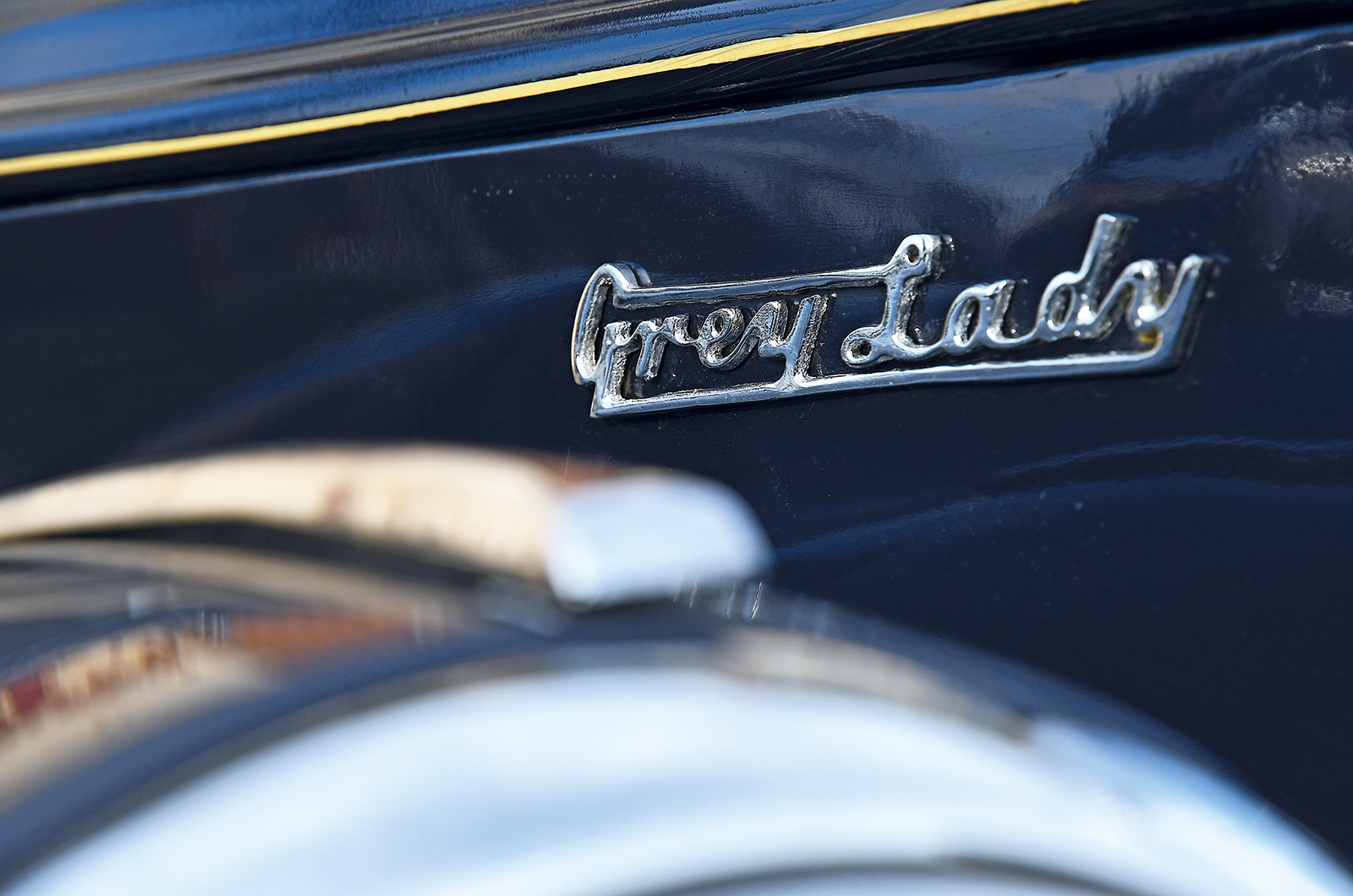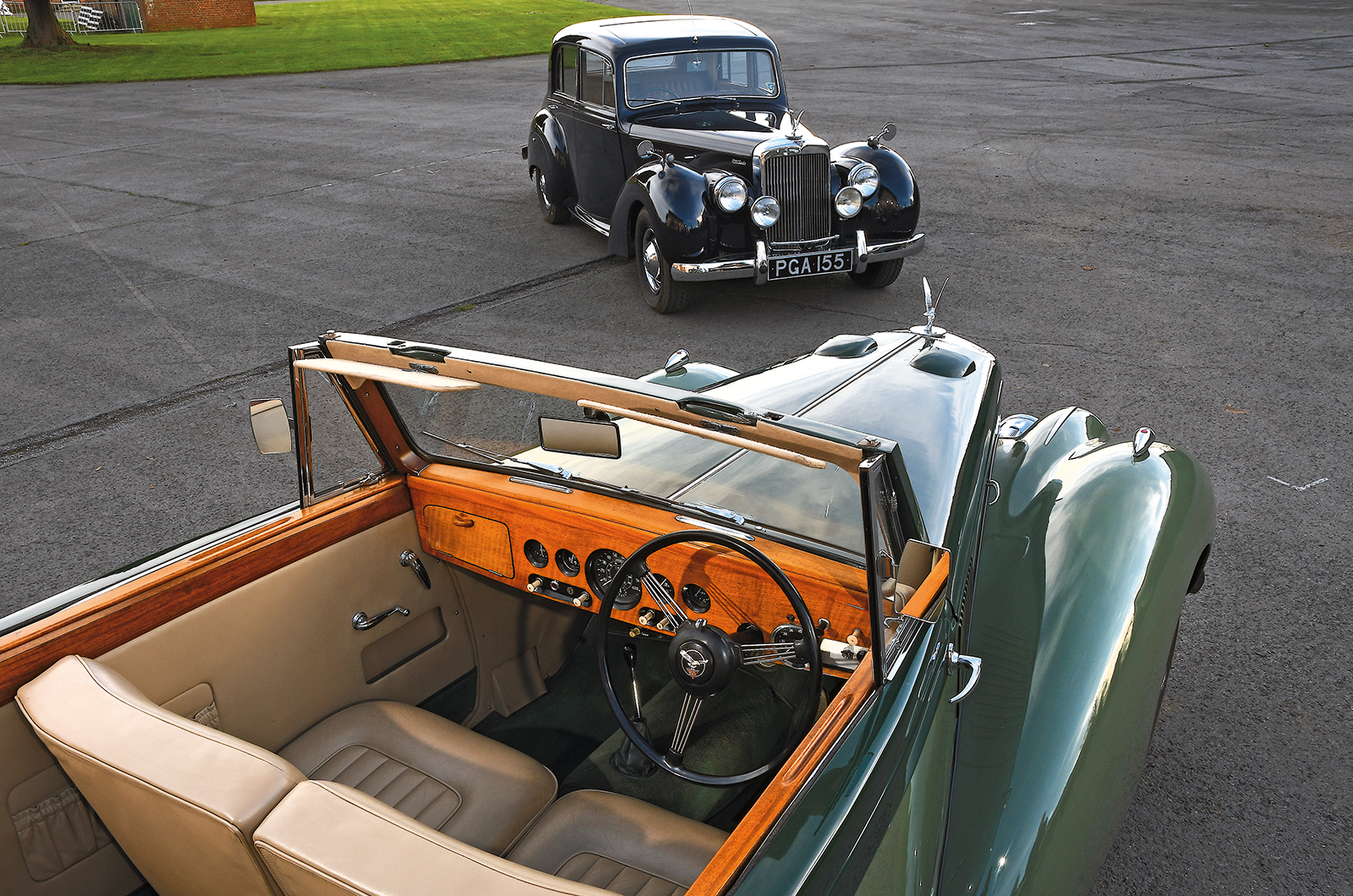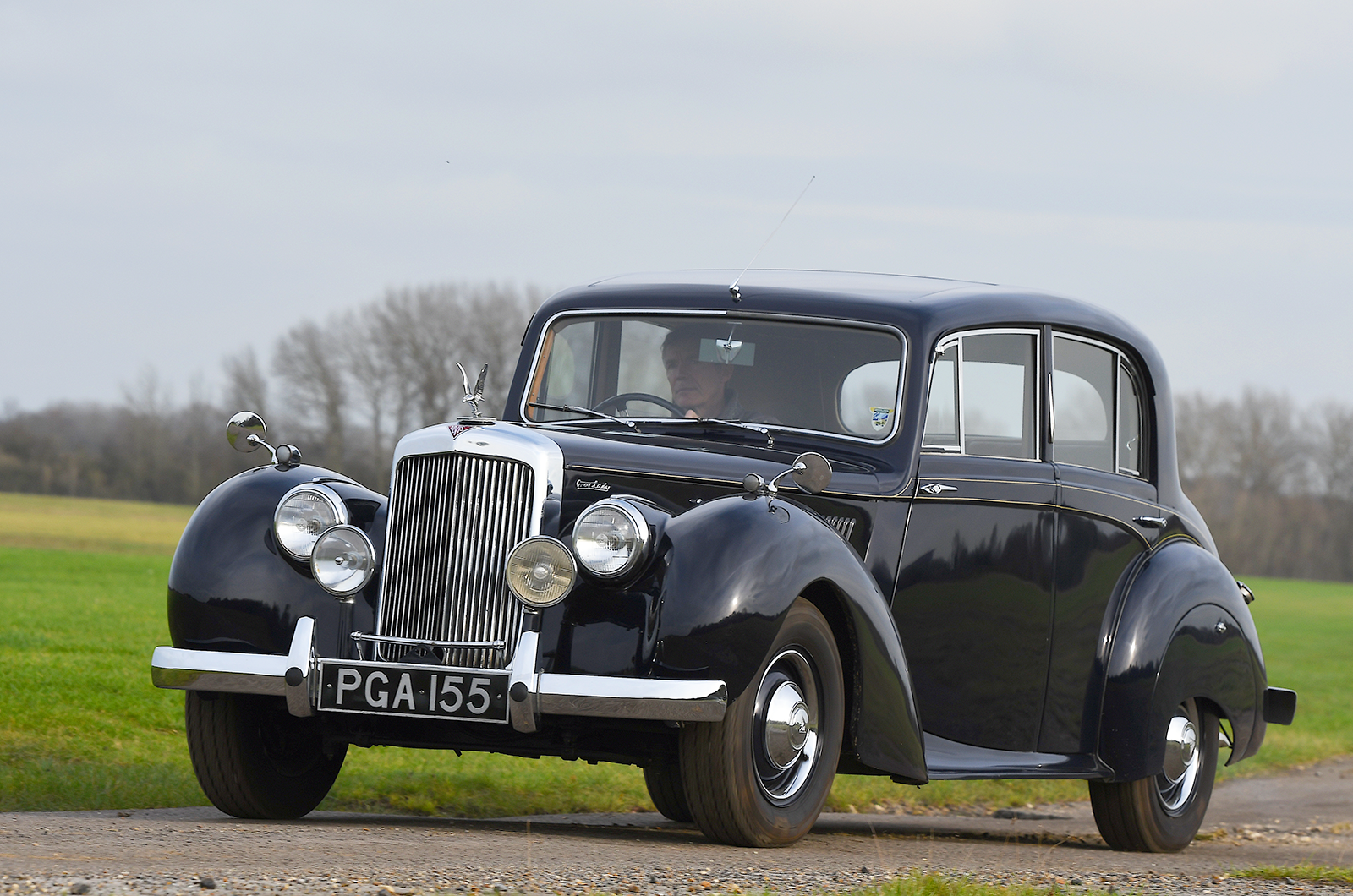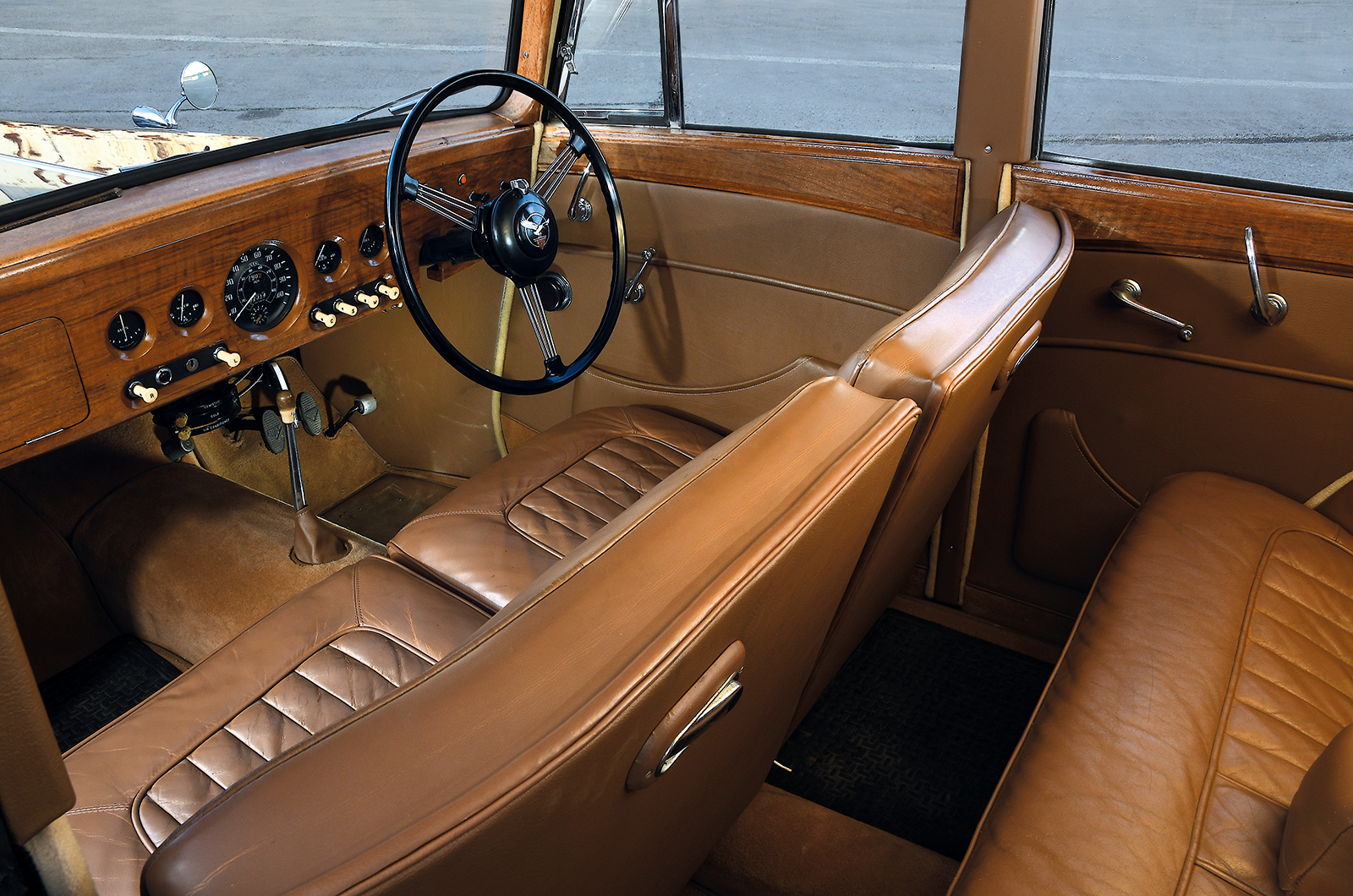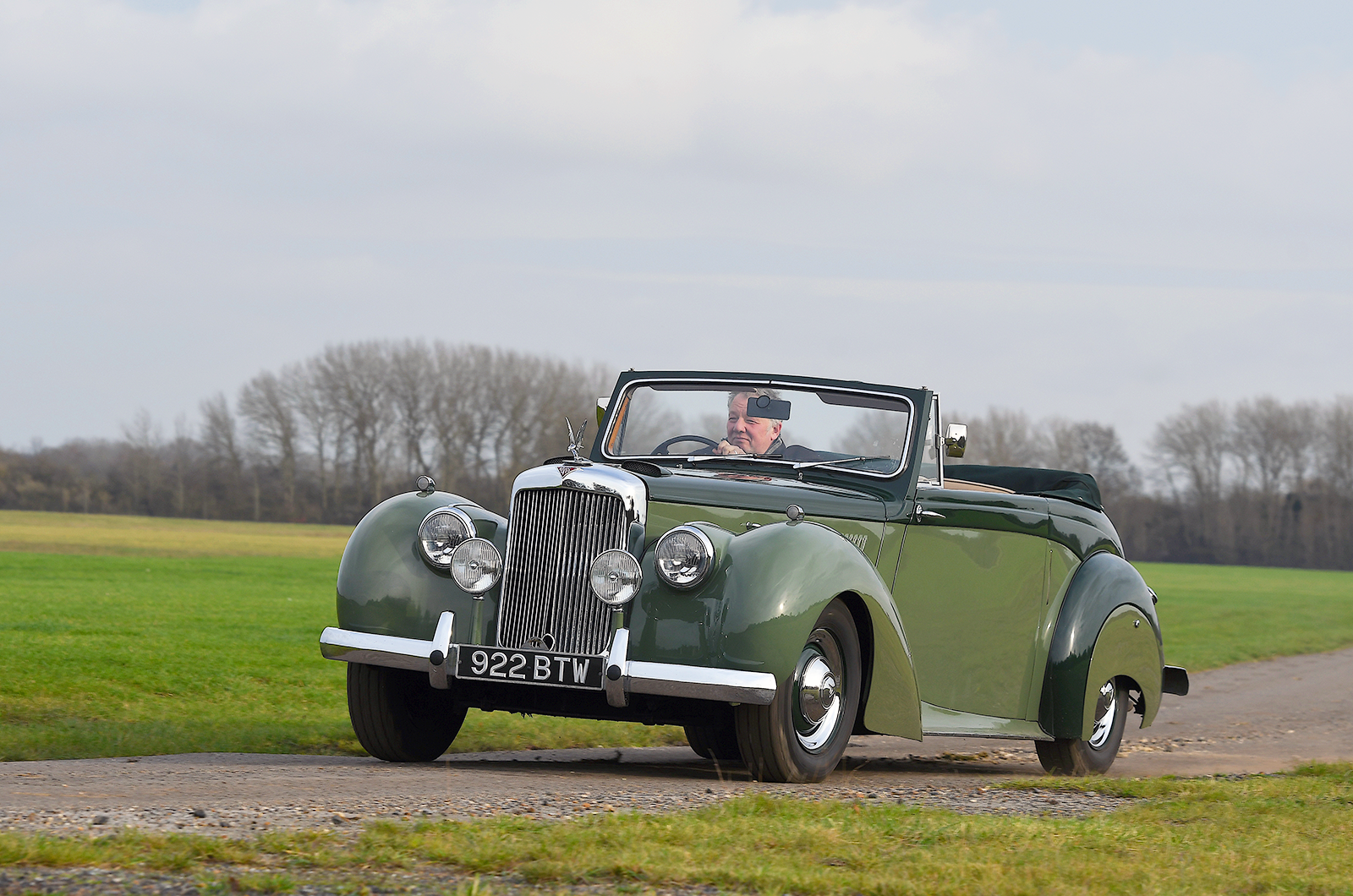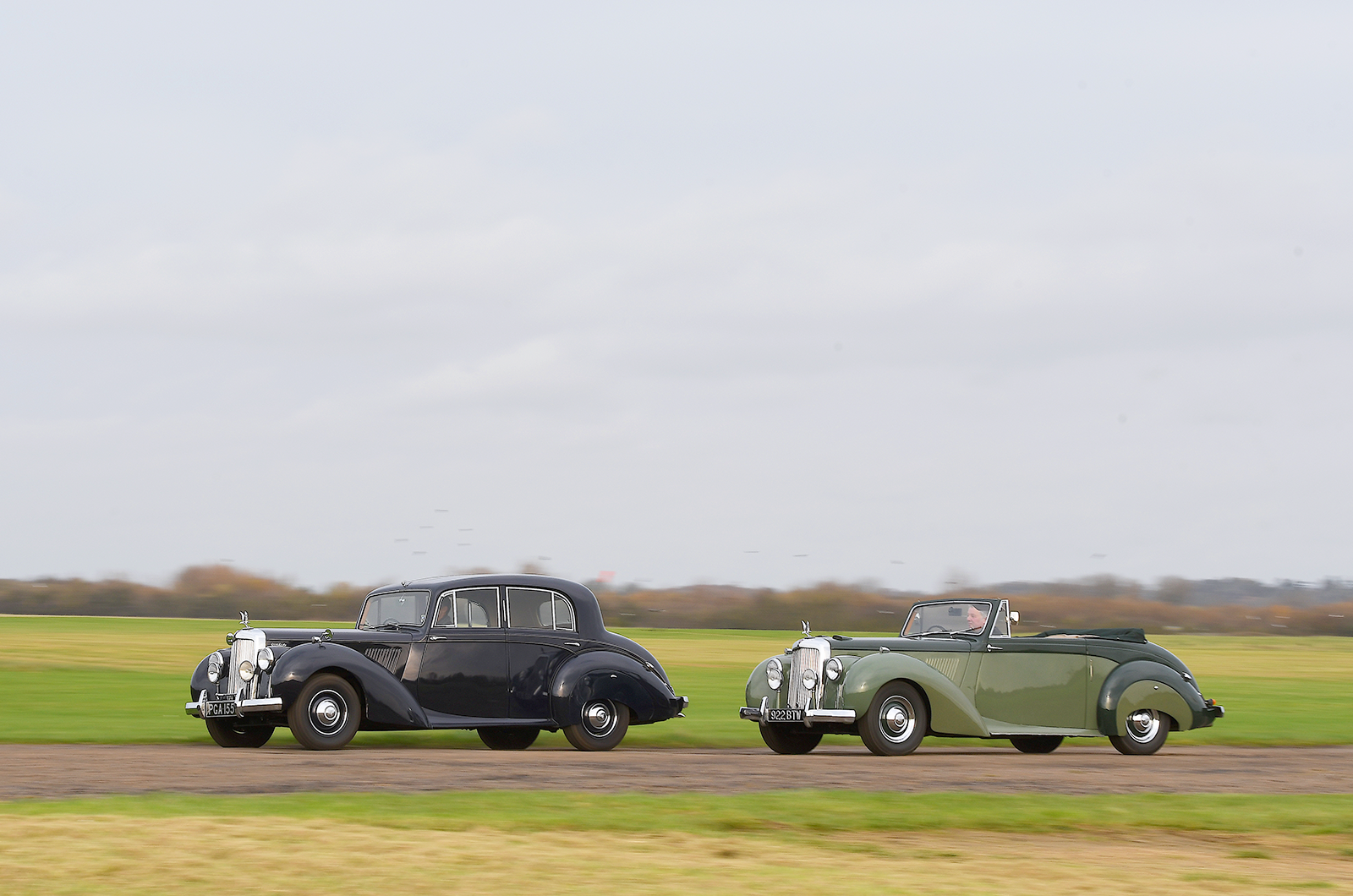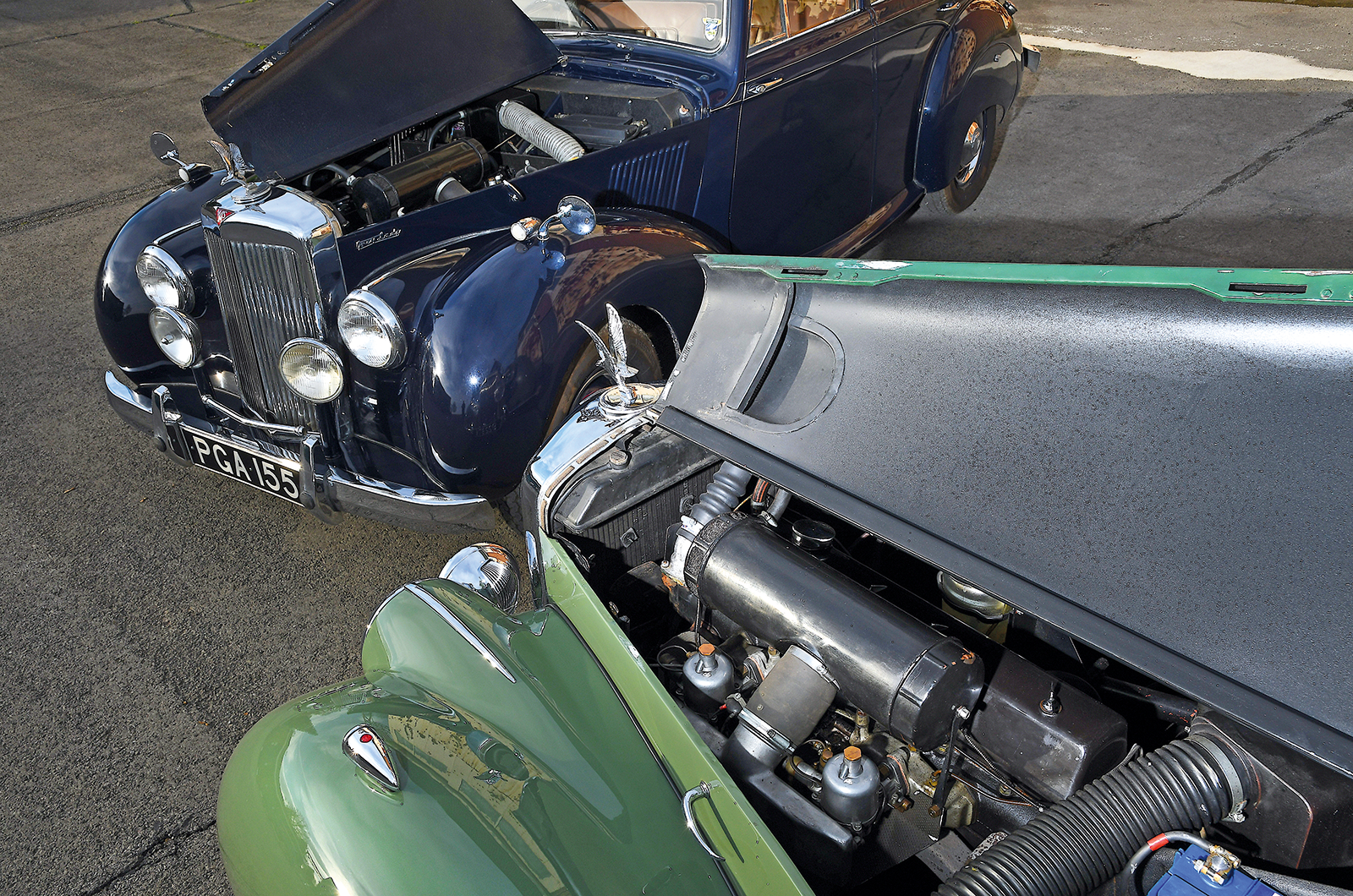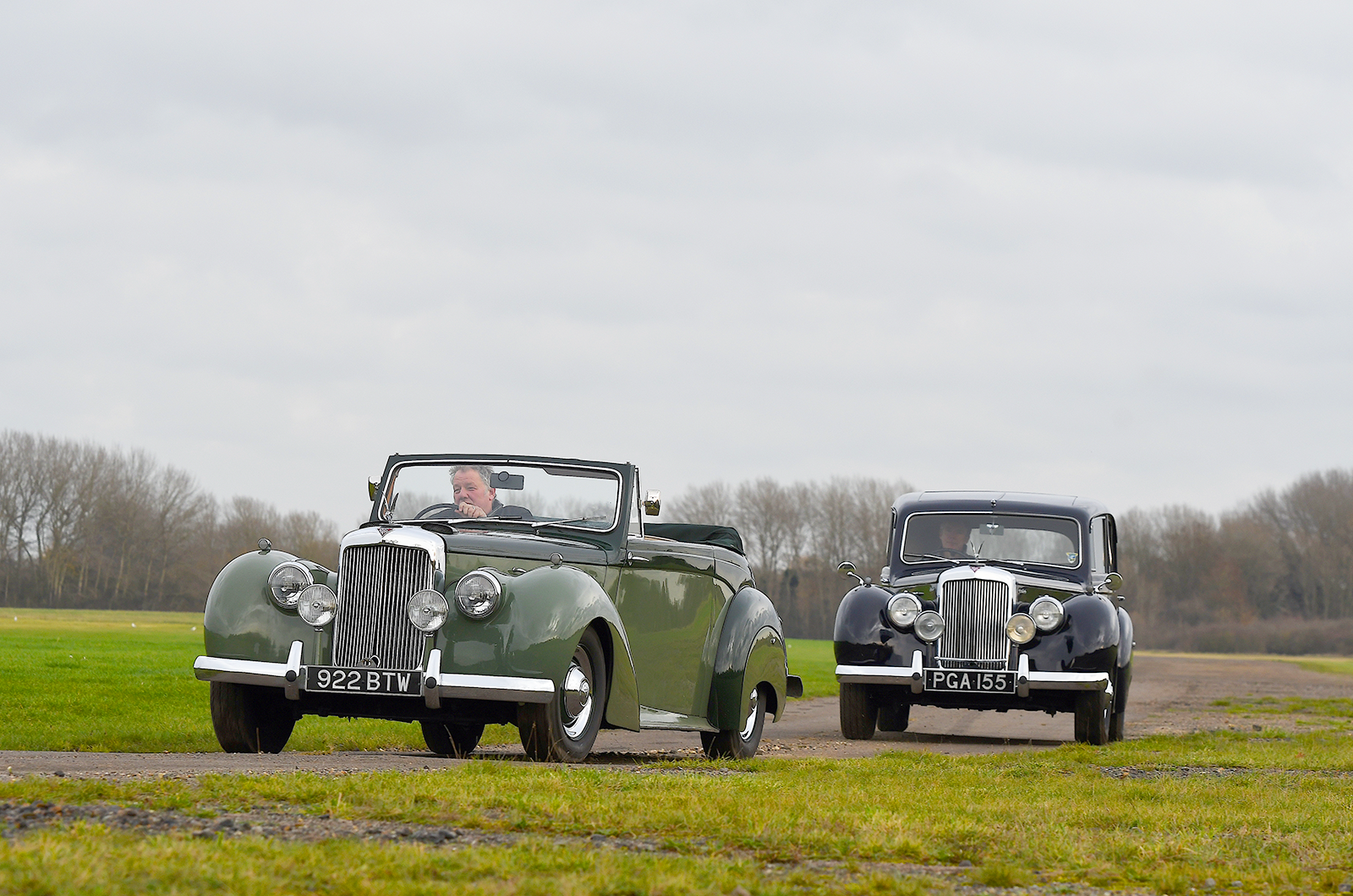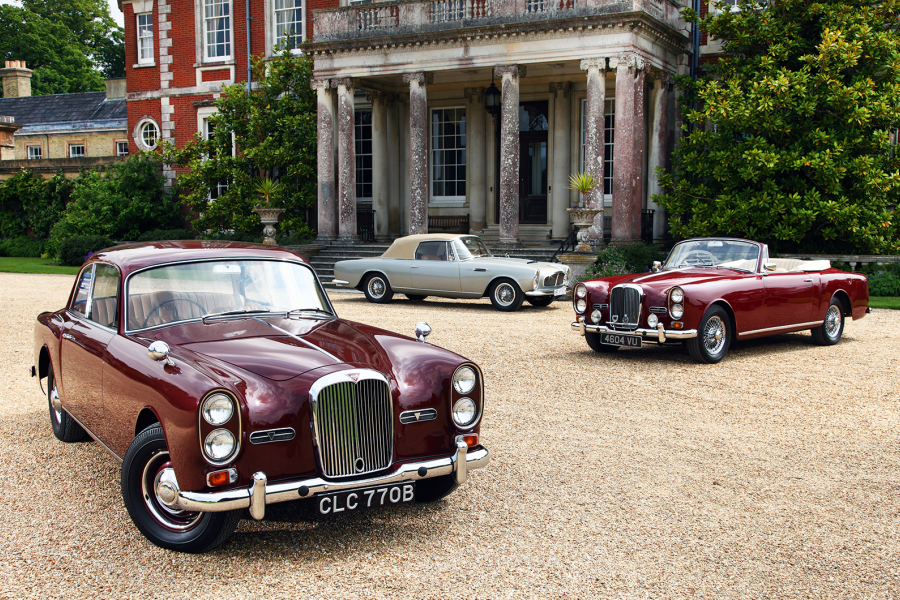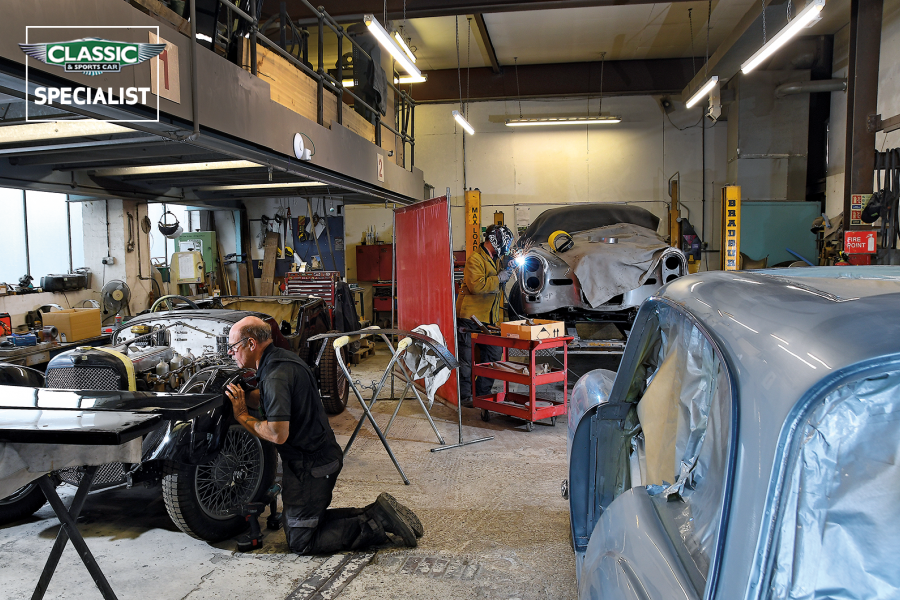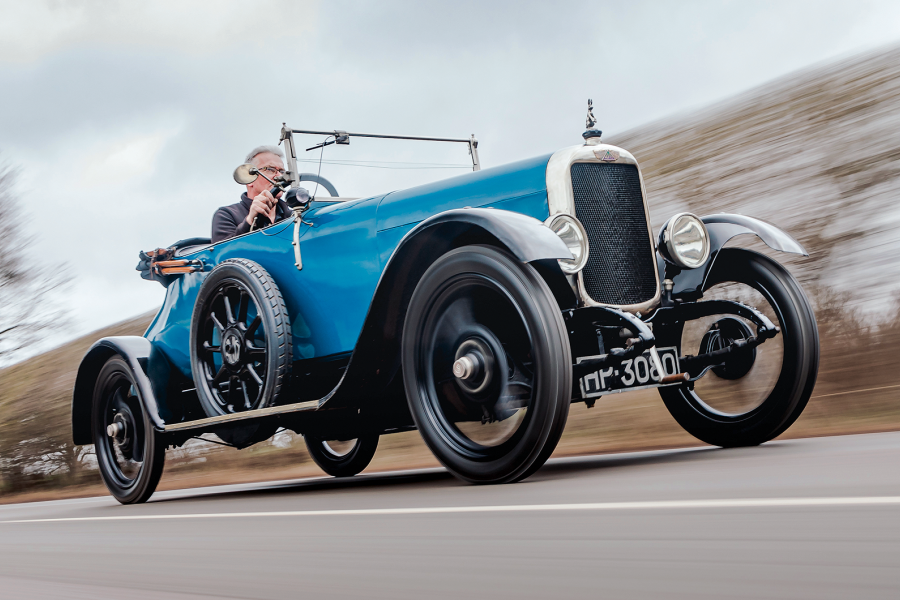Its fixed centre boss depicts the famous red triangle in the claws of an eagle, and you can see how 3-litre owners must have enjoyed that ‘mastery of the road’ feeling, looking down the long bonnet as this distinguished but not ostentatious car put the miles behind it in the tired, monochrome Britain of the early ’50s.
Under way, the drophead feels slightly the sharper of the two, picking up speed eagerly in third and top, but the saloon is not far behind.
Both are superbly flexible and sweet in top gear and you rarely need to drop below third, which would, theoretically, extend to 85mph.
The pedals are sited close together and the throttle is a roller type, giving sensitive control over an engine that will wind out smoothly to its 4000rpm power peak. (The drophead has an aftermarket rev-counter fitted.)
The brakes have long travel in both and the clutch action is on the heavy side of moderate, but it is no chore to stir the short gearlever that pokes assertively out of the carpeted central tunnel.
Its hefty but precise action is a microcosm of the semi-vintage overall character of the Alvis, rewarding decisive, well-timed movements with mechanical feel.
While its mass-produced rivals were tending towards lower-effort controls – with the dialled-in safety valve of strongly understeer-prone handling to cater to a broader set of skill levels – the TC21/100 still assumed a level of interest in the task in hand.
Above walking pace the heft disappears from the steering and such understeer as there is can be easily countered by boosting the 3-litre through the corner.
So, instead of running wide on tortured rubber like the grocer’s Super Snipe or the bank manager’s Rover, the Alvis feels tidy and biddable, with accurate steering that doesn’t load up but castors smoothly back through the hands and doesn’t feel low-geared.
You expect – and get – some roll in tighter, slower corners, but the general agility is beyond reasonable expectations and not achieved at the expense of the ride: while it’s no magic carpet, it remains level and composed.
Driving this pair, it’s easy to see why Alvis ownership has always bred a special kind of loyalty.
In the case of the 3-litre, this meant a diverse group of personalities that embraced everyone from double-amputee war hero Douglas Bader to singer Carmen Miranda (she of the fruit-bearing headgear) via Hitchcock’s favourite composer, Bernard Herrmann, who was a particularly keen Alvis man.
They appreciated the reassuringly expensive 3-litre for its reliability, its brisk turn of speed and the solid value its purchase represented in a fast-changing world of superficially plusher, flashier machines with less enduring appeal.
Smaller than a Standard Steel Bentley and much less frumpy than an Armstrong Siddeley or a Daimler, the Alvis TC21/100 was a car for the driver who drove himself and took a certain amount of pride in doing so.
It still is.
Images: John Bradshaw
Thanks to Mark Elder, The Motor Shed Ltd
Factfile
Alvis TC21/100
- Sold/number built 1953-’55/727 (all TC21s)
- Construction steel chassis, ash frame, steel/aluminium body
- Engine all-iron, ohv 2993cc straight-six, twin SU carburettors
- Max power 100bhp @ 4000rpm
- Max torque 152Ib ft @ 2500rpm
- Transmission four-speed manual, RWD
- Suspension: front independent, by wishbones, coil springs rear live axle, semi-elliptic leaf springs; telescopic dampers f/r
- Steering Burman recirculating ball
- Brakes hydraulic drums
- Length 15ft 2in (4623mm)
- Width 5ft 6in (1676mm)
- Height 5ft 2½in (1588mm)
- Wheelbase 9ft 3½in (2832mm)
- Weight 3500Ib (1588kg)
- Mpg 20
- 0-60mph 15 secs
- Top speed 100mph
- Price new £1821
- Price now £25-60,000*
*Prices correct at date of original publication
READ MORE
From the past with presence: Bristol 405 vs Lagonda 3 Litre
How the other half lived: Bentley MkVI vs Armstrong Siddeley Sapphire 346
Meet the unique Rolls-Royce Phantom II Continental that thinks it’s a hot rod
Martin Buckley
Senior Contributor, Classic & Sports Car
